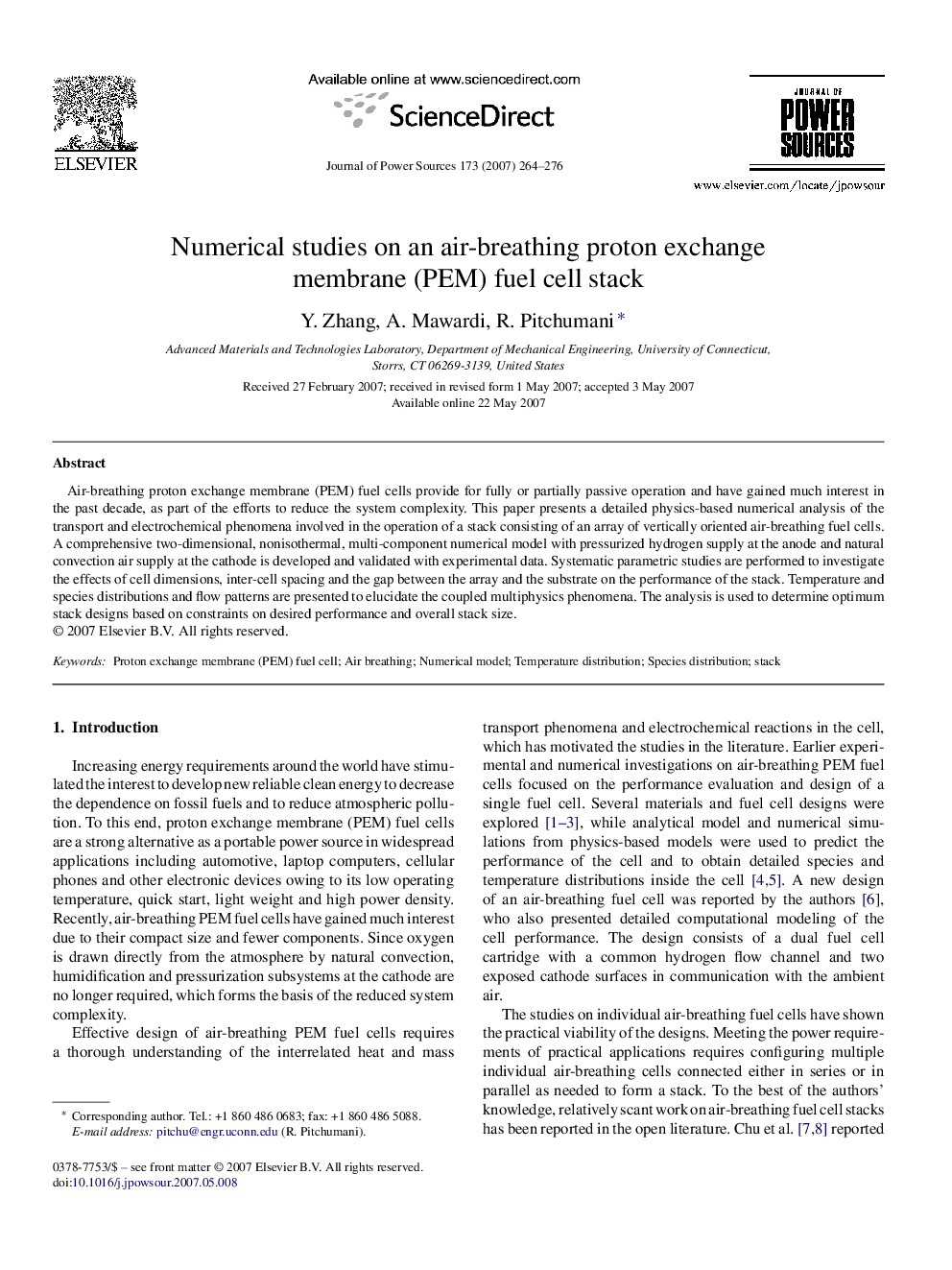| Article ID | Journal | Published Year | Pages | File Type |
|---|---|---|---|---|
| 1294894 | Journal of Power Sources | 2007 | 13 Pages |
Abstract
Air-breathing proton exchange membrane (PEM) fuel cells provide for fully or partially passive operation and have gained much interest in the past decade, as part of the efforts to reduce the system complexity. This paper presents a detailed physics-based numerical analysis of the transport and electrochemical phenomena involved in the operation of a stack consisting of an array of vertically oriented air-breathing fuel cells. A comprehensive two-dimensional, nonisothermal, multi-component numerical model with pressurized hydrogen supply at the anode and natural convection air supply at the cathode is developed and validated with experimental data. Systematic parametric studies are performed to investigate the effects of cell dimensions, inter-cell spacing and the gap between the array and the substrate on the performance of the stack. Temperature and species distributions and flow patterns are presented to elucidate the coupled multiphysics phenomena. The analysis is used to determine optimum stack designs based on constraints on desired performance and overall stack size.
Keywords
Related Topics
Physical Sciences and Engineering
Chemistry
Electrochemistry
Authors
Y. Zhang, A. Mawardi, R. Pitchumani,
